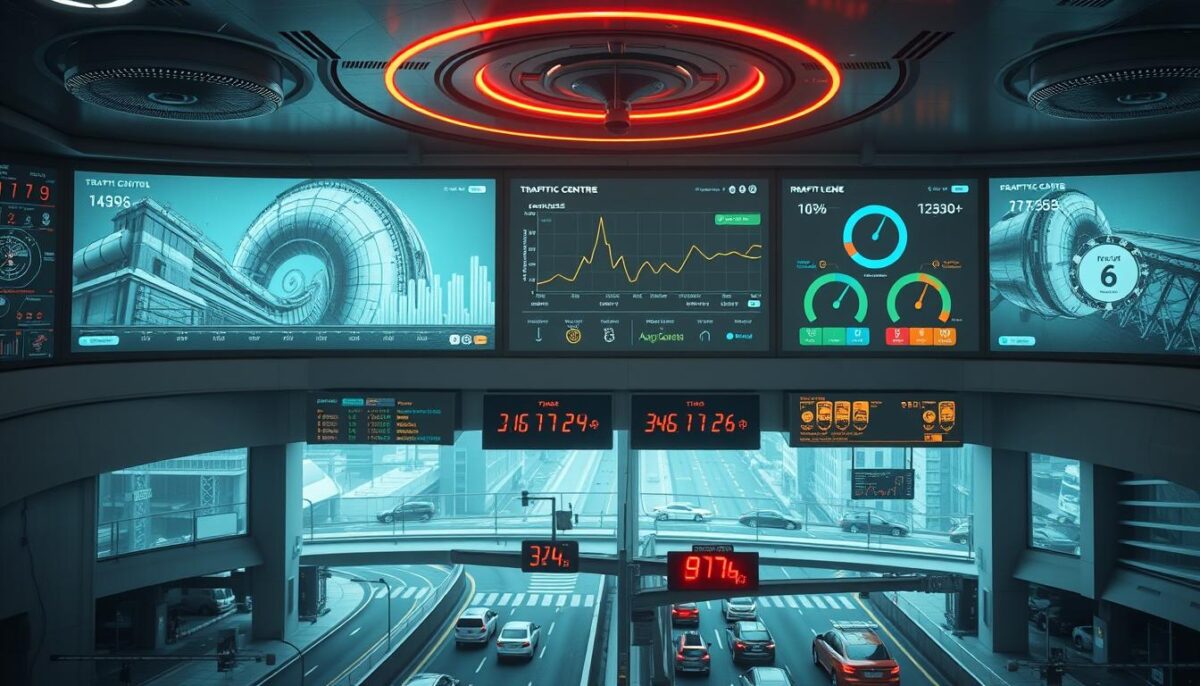As road safety becomes an increasing concern in the United States, new technologies are urgently needed to combat the rising rates of traffic accidents. With approximately 38,000 fatalities reported annually by the National Highway Traffic Safety Administration, the quest for solutions has intensified. One of the most promising advancements is radar technology, which enhances both traffic management and collision avoidance systems. By integrating smart traffic systems with radar capabilities, we can improve real-time monitoring and significantly reduce accidents on our roads.
Organizations such as the Federal Highway Administration are advocating for the wider adoption of these technologies, recognizing their potential to transform road safety. In the coming sections, we will explore how radar operates in traffic monitoring and its role in creating safer driving environments.
Understanding Radar Technology in Road Safety
Radar technology plays a crucial role in enhancing road safety through its precise vehicle detection and measurement capabilities. The radar technology definition encompasses systems that use radio waves to identify the distance, speed, and direction of objects, which is vital for collision prevention. Multiple radar applications extend beyond road safety, including aviation and maritime navigation, showcasing the versatility and reliability of this technology.
What is Radar Technology?
Radar systems operate by sending out radio waves that reflect off objects, allowing for accurate data collection. The distinction between active vs. passive radar is significant. Active radar systems emit their signals, seeking out reflections from vehicles and other obstacles. Passive radar, on the other hand, utilizes existing signals from sources such as cell phones, creating an efficient and often less intrusive monitoring solution. Both types of radar contribute to overall safety measures on the roads.
How Radar Works in Traffic Monitoring
Traffic monitoring systems utilize radar sensors strategically placed along roadways to detect vehicle movements and speeds. These sensors gather real-time data, providing insights into peak traffic times and congestion patterns. By analyzing this information, traffic management systems can identify potential accident hotspots. In addition to monitoring, real-time alerts can inform drivers about high-speed vehicles or obstacles on the road, fostering improved situational awareness.
| Radar Technology Aspect | Active Radar | Passive Radar |
|---|---|---|
| Signal Emission | Yes | No |
| Data Processing | Reflective | Existing Signals |
| Primary Applications | Vehicle Detection, Speed Measurement | Traffic Monitoring, Surveillance |
| Typical Use Cases | Collision Avoidance Systems | Real-time Traffic Analysis |
The rich data gathered from radar technology dramatically enhances roadway design and traffic signal optimization. By understanding vehicle behavior and flow, cities can implement measures that significantly reduce accidents, cultivating a safer driving environment for everyone.
Using Radar to Improve Road Safety and Reduce Accidents
Radar technology plays a pivotal role in enhancing road safety by enabling real-time data collection and effective traffic management systems. The integration of these systems leads to improved decision-making and traffic flow optimization, which can significantly reduce accidents.
Real-Time Data Collection for Traffic Management
Real-time data collection empowers traffic management agencies with instant insights into traffic conditions. Radar sensors continuously monitor vehicle speeds, traffic density, and congestion levels, allowing for prompt data analysis. This proactive approach aids in dynamically adjusting signal timings and deploying resources, which can lead to a notable decrease in travel times and improved traffic safety improvements across urban areas.
Enhancing Vehicle-to-Infrastructure Communication
Vehicle-to-infrastructure (V2I) technologies leverage communication technology to facilitate better interactions between vehicles and road systems. Radar-enabled systems enable vehicles to receive real-time updates about road conditions, potential hazards, and traffic changes. Protocols such as Dedicated Short-Range Communications (DSRC) and Cellular Vehicle-to-Everything (C-V2X) enhance these interactions. Such advancements are crucial for the effectiveness of smart transport systems and for ensuring the safety of autonomous vehicles relying on accurate data for navigation.
Case Studies: Successful Implementations
Various jurisdictions have demonstrated successful implementations of radar technology in traffic management. Notable examples include innovative programs in cities like Los Angeles and San Francisco, where radar technology case studies illustrate marked reductions in vehicle collisions and traffic-related fatalities. These implementations focused on leveraging data analysis and real-time feedback from radar systems to achieve meaningful traffic safety improvements.
| City | Implementation Year | Collision Reduction (%) | Fatality Decrease (%) |
|---|---|---|---|
| Los Angeles | 2019 | 25 | 30 |
| San Francisco | 2020 | 20 | 35 |
| Chicago | 2021 | 18 | 22 |

The Future of Road Safety with Radar Innovations
As we look ahead, the future of road safety will undoubtedly be shaped by radar advancements that enhance the way we monitor and manage traffic. With improved signal processing capabilities, radar technology is becoming increasingly adept at accurately detecting vehicle speed and movement patterns. This will allow traffic management systems to respond in real-time, minimizing congestion and reducing the likelihood of accidents.
The integration of radar with artificial intelligence represents a significant leap forward in traffic innovation. Smart cities are beginning to adopt comprehensive radar systems that analyze traffic flow and predict potential hazards. These innovations not only aim to create safer environments for drivers and pedestrians but also strive to optimize the overall efficiency of transportation networks.
However, the journey toward achieving these advancements will not be without challenges. Considerations regarding the implementation of radar systems include costs and public acceptance. Addressing these issues will be essential for the widespread adoption of radar technology in future road safety initiatives. As radar continues to evolve, it will remain a cornerstone in the quest for safer roads and smarter cities.




